by Jo Hudson, Conservation & Communications Officer, London
As I stepped off the plane in Stone Town, Zanzibar, the heat hit me like a slap the face and I was dazzled by the sunlight – I thought to myself “Toto I don’t think we’re in Kansas anymore…” Well to be more accurate, London. Having left a very cold and dark (despite it only being 4pm) Heathrow it felt surreal to be in the bright, ‘technicolour’ world of the tropics merely hours later and very much like stepping into the merry old land of Oz.
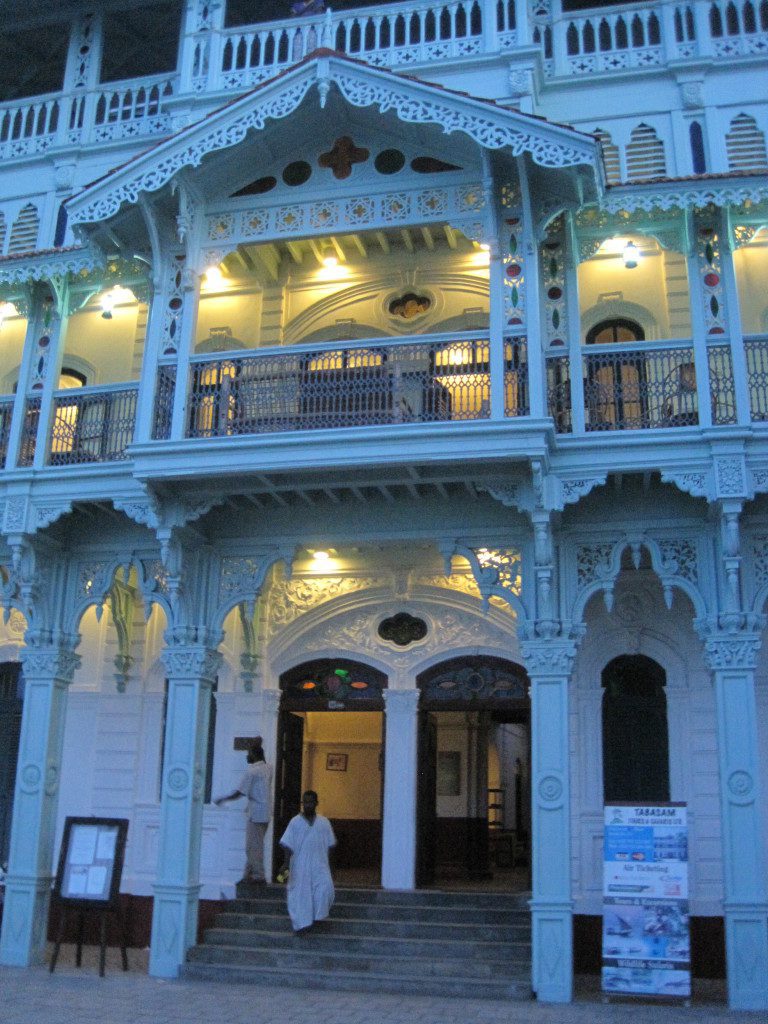
Typical Stone Town architecture – a world away from London
For me Zanzibar was one of those places which conjured up images of mysterious faraway lands: Coconuts, pirates, palm trees and spices – and a place that I have always wanted to visit. Stone Town, it’s capital, is the beating heart of the island; a myriad of narrow cobbled streets where it’s easy to get lost but fun to try, where the smell of spices hangs in the air and the local women’s vivid scarves brighten up the shaded alleys. Where the beat of Africa meets the 1001 Nights romance of Arabia – definitely a taste of the exotic.
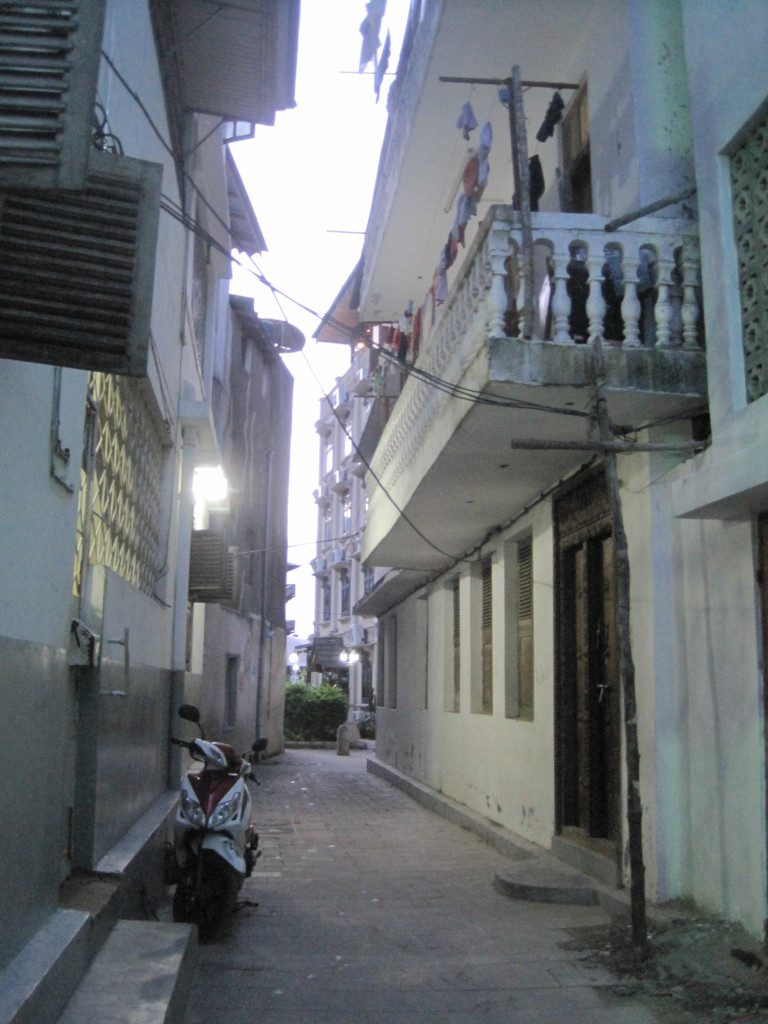
It’s easy to get lost in the narrow streets
So why did I leave the black and white world of an English winter for the bright colours of the ‘Spice Island’? I was here to help coordinate the workshop that BV, in partnership with IMS and funded by WIOMSA, had spent months organising – Community based Aquaculture in the western Indian Ocean: Challenges face and lessons learned. Gathering together 40 experts from across the western Indian ocean (and beyond) to discuss the past, present and future challenges of community based aquaculture (CBA) in the region, in order to help shape the field to benefit both coastal communities and the environment.
Aquaculture is a somewhat controversial activity in the eyes of many environmentalists who see it only as the destroyer of mangroves and polluter of coastal zones. However, if managed correctly on a smaller scale, community led aquaculture has the potential to improve local livelihoods while also helping to alleviate pressure on marine resources. Unfortunately the progress and experiences made in this rich sector are not often shared or published, making it difficult to assess CBA development and create best practices.
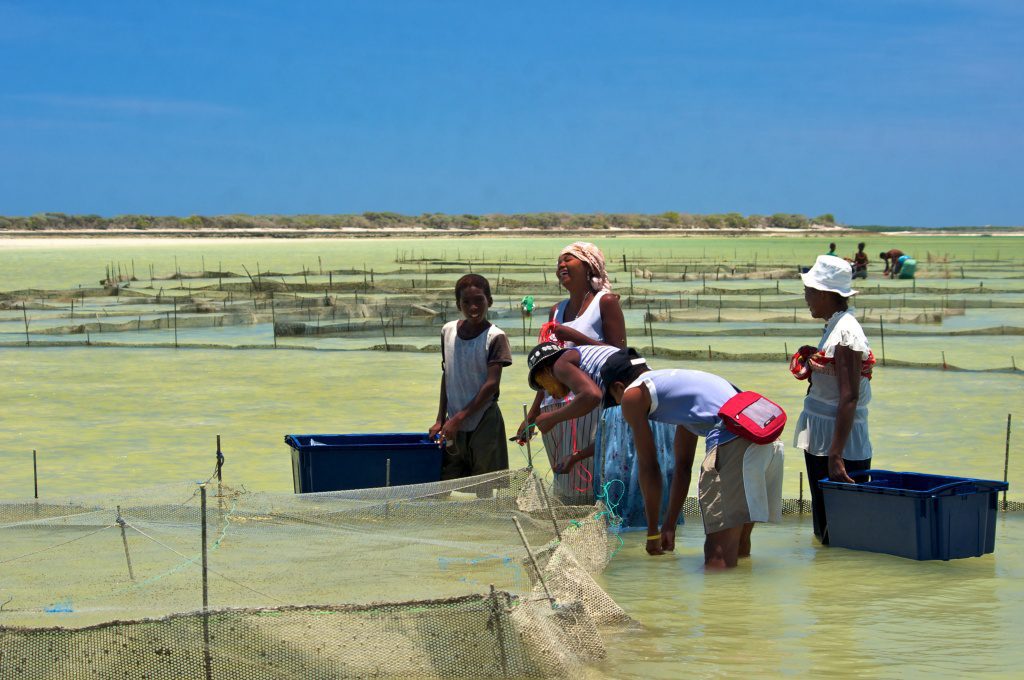
CBA has the potential to alleviate poverty whilst also reducing pressure on marine resources
I was awoken bright and very early (as our hotel was next to a mosque and the call to prayer was at 5am on the dot!) on the first day of the workshop, the nerves were kicking in – months of hard work all leading up to these three days. Despite a slight delay to the start time, after all TIA, everything went relatively smoothly; enthusiasm was high from the start with all involved in the workshop looking forward to a successful event, and the chance to meet other people working on CBA ventures. The workshop was opened by the Principal Secretary for Women and Children Affairs, Mrs Fatima Bilal, who was swiftly followed by Professor Selina Stead of Newcastle University who gave the first keynote speech. Professor Stead set the tone for the workshop, giving an overall picture of CBA in the western Indian Ocean (WIO) and asking some fundamental questions into the reasons why aquaculture as a potential answer to the possible (and very real) future food security crises is not fulfilling its potential in this regard.
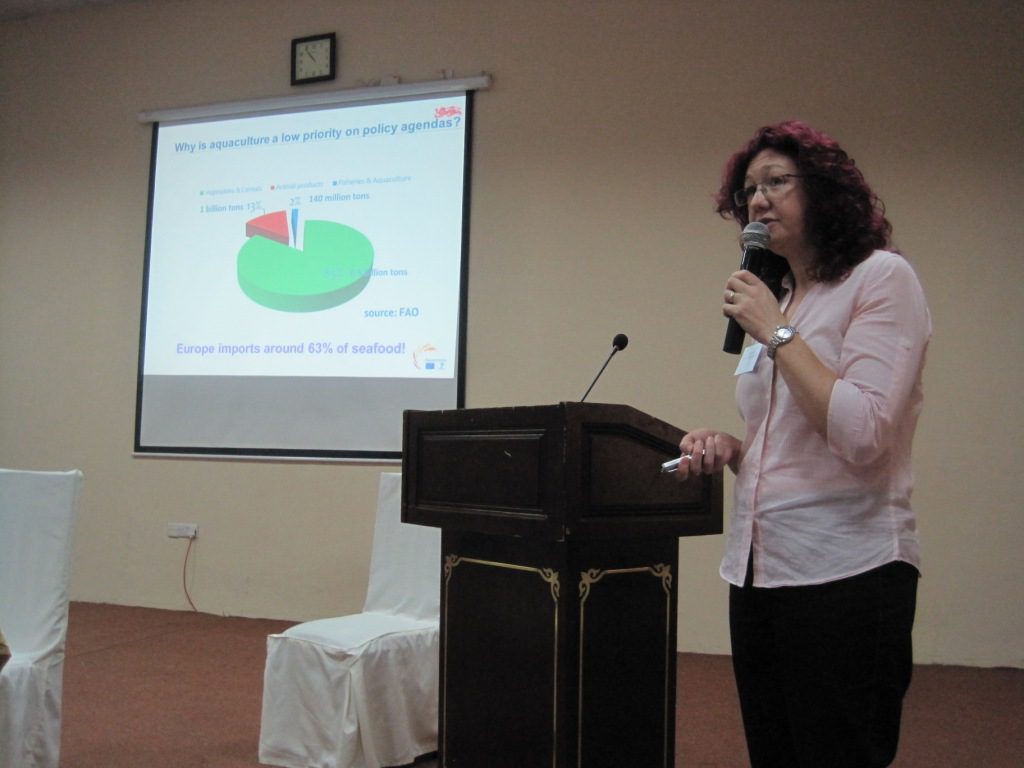
Professor Selina Stead gives the first keynote speech of the workshop
Throughout day one and part of day two, participants shared their experiences of CBA in their countries by giving presentations about their work and understanding of the current situation. For someone who does not have a formal background in aquaculture it was immensely interesting to learn more about CBA across the WIO, but felt a little like diving in at the deep end. We finished the first day with an informal networking event at the legendary Mercury’s Bar, named for Zanzibar native and local hero Freddie Mercury of Queen fame. This was an opportunity to ‘talk shop’ and find out more about our fellow workshop attendees while relaxing over a cold (and well deserved) Kilimanjaro beer.
Days two and three were when we got down to the real nuts and bolts of the workshop; looking at what the situation is for CBA in the region. If it is working, why? If it is not working, why? Can CBA work in conjunction with conservation – are there examples for and against? And would a formal regional network help promote and develop CBA in the WIO? These days were broken down into three smaller workshop sessions each focusing on a different aspect of CBA: 1) The current status of CBA in the WIO, 2) CBA and biodiversity conservation and 3) Creating a formal CBA network for the WIO.
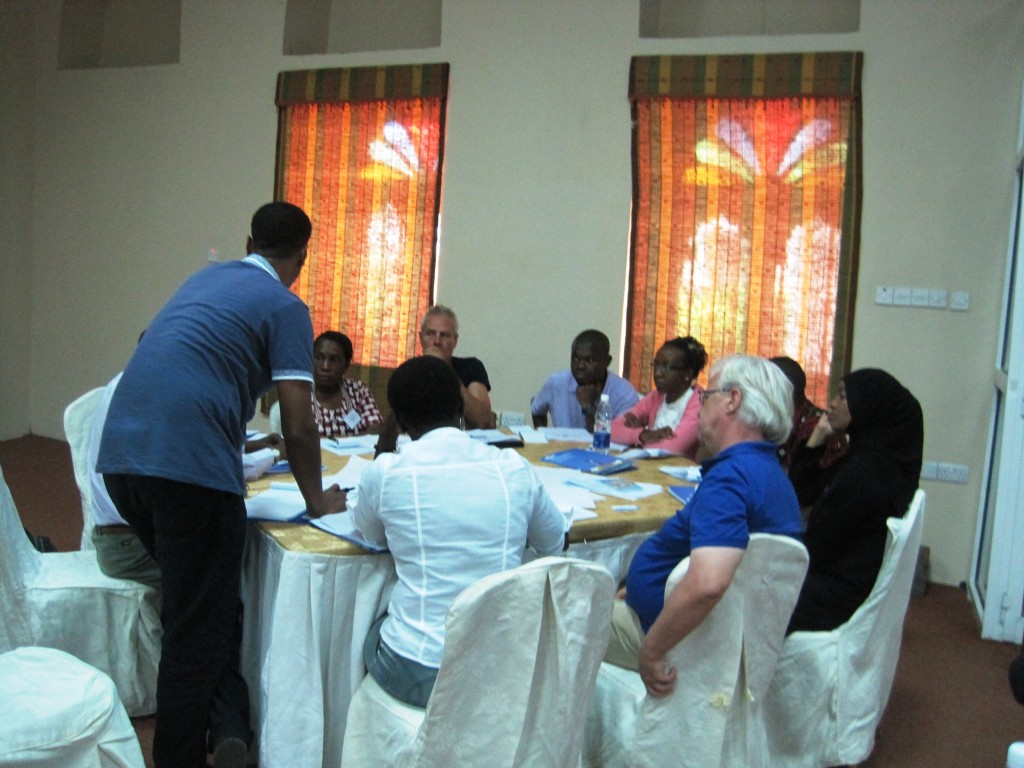
Group discussions were an important part of the learning process
The first workshop looking at the status of CBA in the WIO and took part over most of day two.The session proved productive with lively debate and excellent questions raised. The main factors limiting CBA activities in the WIO included, lack of capacity (both institutionally and locally) to manage CBA projects long term, over reliance on donor funding, poor governance, gender inequality, poor market access and participation; the same issues that affect many conservation projects the world over. However, recommendations on how to overcome these hurdles were also made and the attendees left for the field trip feeling enthused.
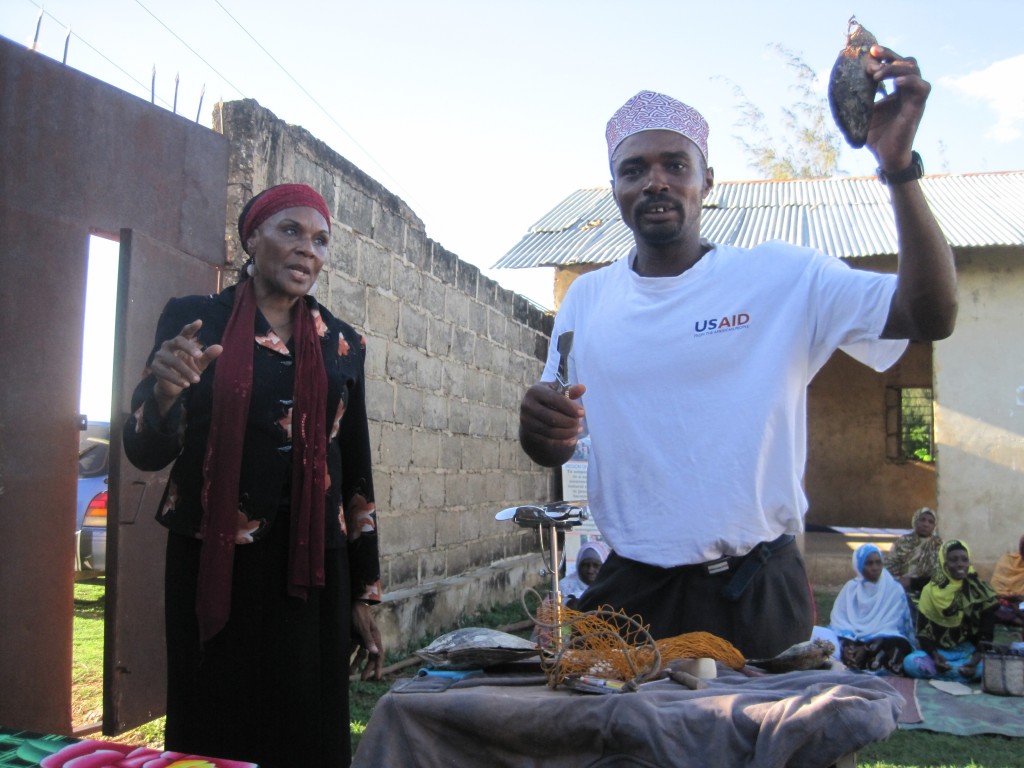
A local pearl farmer shows us how to extract pearls from the farmed oysters
The field trip proved to be just as interesting and engaging as we had hoped. After visiting a local pearl farm where we learned how the local farmers collect shells and seed oysters to create pearls, and saw the beautiful jewellery they created, we went to their community run shop where some impromptu Christmas shopping took place. I can safely say that the items I bought were very much appreciated! The trip gave me a much better understanding of the actual benefits that CBA projects can bring to communities. Apart from the extra income that is produced, the women are more confident and feel that their contributions to the village elevate their status – lessening the gender inequalities that are often deep-seated in many areas of the developing world.
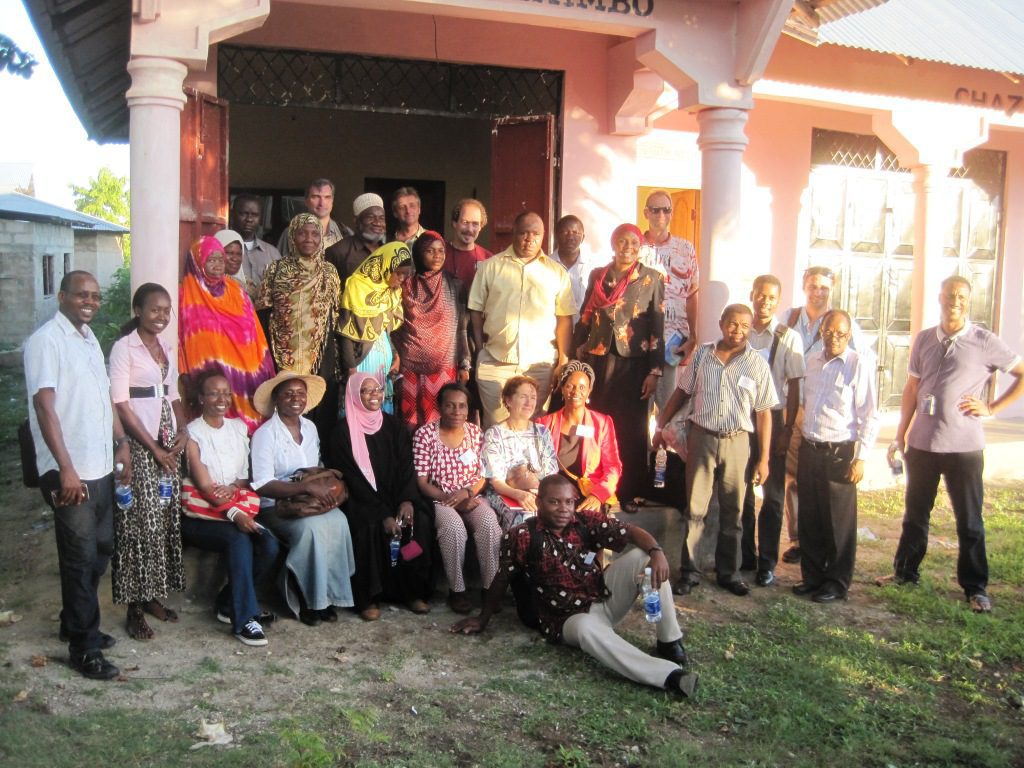
The participants of the workshop outside the community run shop selling the jewellery made by the CBA cooperatives
Following a relaxed dinner held for all the attendees, day three also proved to be just as enlightening and productive as the previous days. However, now came the hard task of looking at conservation and aquaculture – two words that are often seen as an oxymoron when used together. But, there is the potential for CBA to work in conjunction with conservation and help to relieve pressure on marine resources.
Professor Selina Stead ran this session with participants again working in three groups to answer the proposed questions. What became obvious from the start was that while in theory CBA and conservation can be mutually beneficial, this is often not the case and examples were hard to come by. In the main it was thought that CBA activities have had a negative impact on the environment. But why is this? It came back to the repeat offenders in the conservation game such as poor governance, lack of funding and inadequate planning. Integrating CBA into conservation planning and management was considered to be the key to success, and a message that was taken on board by everyone at the workshop.
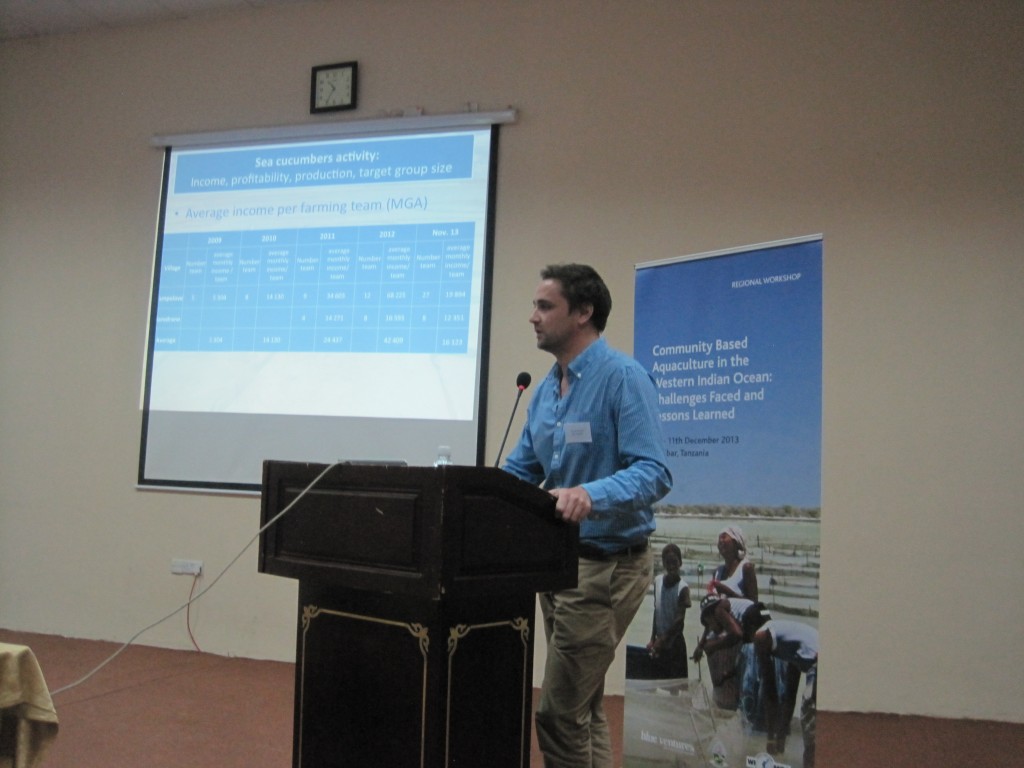
Antoine Rougier ran the session on building a CBA network, seen here talking about BV’s aquaculture work in Madagascar
I unfortunately missed a large portion of our final workshop session seeing to the final bits of logistics and organisation. However the final session was examining the creation of a regional network for CBA in the WIO. While in theory these networks have the power to link together practitioners from different areas, disseminate information and better inform best practice, in real life they can fall flat due to inadequate funding and organisation. The attendees obviously had some concerns in regards to forming a network, which came out during the group discussions, however there was also an overwhelming positive consensus towards its establishment.
We ended the event on a high,and the attendees left with both new ideas and new friends. However, now the real work begins – building on the momentum gained during the workshop, the organisers want to push the findings far and wide so that lessons on best practice are absorbed, and that CBA is recognised as a viable and sustainable alternative to fishing.
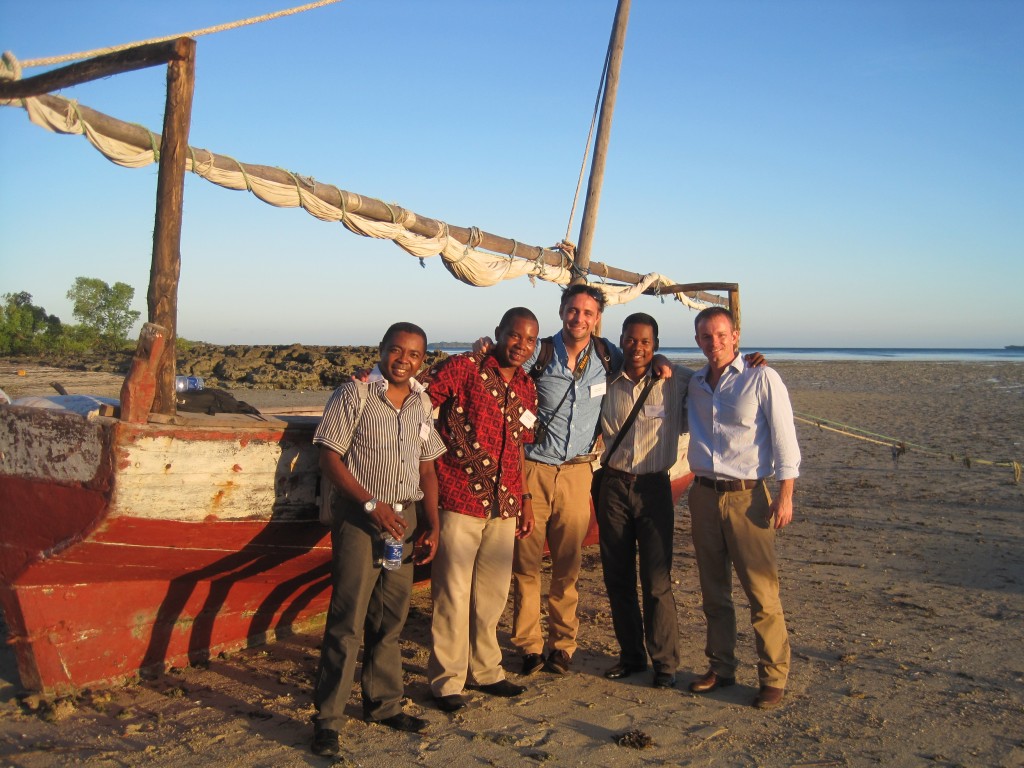
Team BV in Zanzibar: (Left to Right) Thierry Lavitra of the IHSM, Gatean Tsiresy, Antoine Rougier, Hoby Razafinama and Brian Jones
The workshop marked the start of a new era for those working in the aquaculture field to direct CBA activities in the WIO region towards a future that supports both the empowerment of local communities and the conservation of their precious marine resources. However it was also much more than that; CBA practitioners got the chance to meet others working in the same field, perhaps for the first time, and find out what the situation is like for them. Sharing experiences is so vitally important not just for science but for all disciplines – learning from past mistakes and building on success is the way that knowledge is driven forward.
For me the workshop was a crash course in a multitude of subjects but one that was both rewarding and informative – and an experience that won’t soon be forgotten: Sometimes stressful, mostly hot but always interesting , as they say in Zanzibar “Hakuna Matata!”
Blue Ventures would like to thank our co-organisers IMS for their invaluable help, WIOMSA for funding this workshop, our keynote speakers Selina Stead and Peter Britz, and all the attendees who made the three days so productive.

